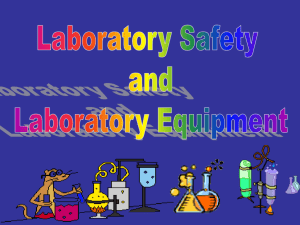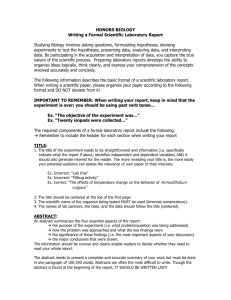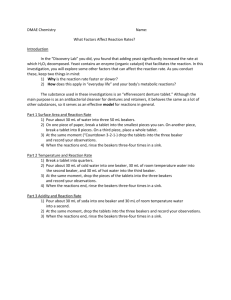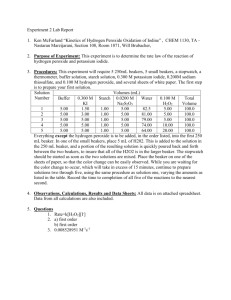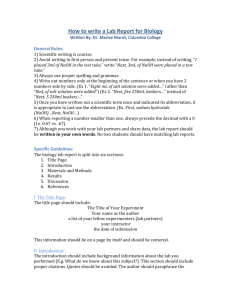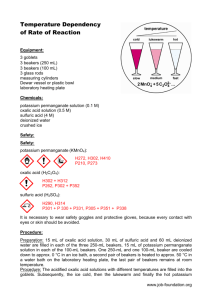Document
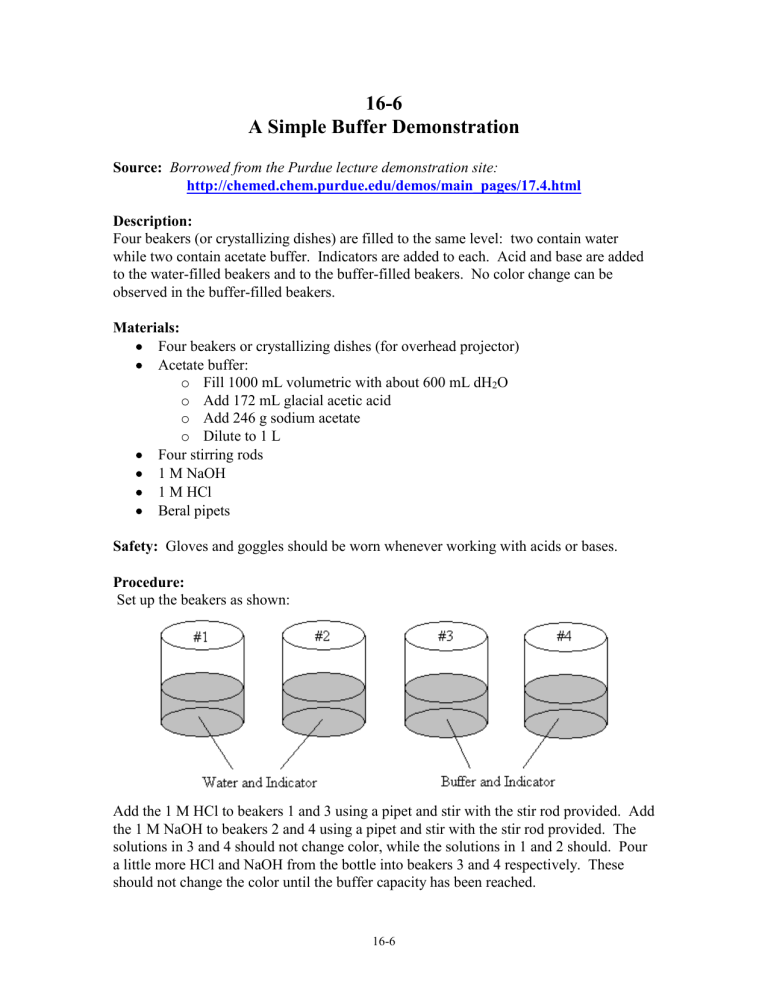
16-6
A Simple Buffer Demonstration
Source: Borrowed from the Purdue lecture demonstration site: http://chemed.chem.purdue.edu/demos/main_pages/17.4.html
Description:
Four beakers (or crystallizing dishes) are filled to the same level: two contain water while two contain acetate buffer. Indicators are added to each. Acid and base are added to the water-filled beakers and to the buffer-filled beakers. No color change can be observed in the buffer-filled beakers.
Materials:
Four beakers or crystallizing dishes (for overhead projector)
Acetate buffer: o Fill 1000 mL volumetric with about 600 mL dH
2
O o Add 172 mL glacial acetic acid o Add 246 g sodium acetate o Dilute to 1 L
Four stirring rods
1 M NaOH
1 M HCl
Beral pipets
Safety: Gloves and goggles should be worn whenever working with acids or bases.
Procedure:
Set up the beakers as shown:
Add the 1 M HCl to beakers 1 and 3 using a pipet and stir with the stir rod provided. Add the 1 M NaOH to beakers 2 and 4 using a pipet and stir with the stir rod provided. The solutions in 3 and 4 should not change color, while the solutions in 1 and 2 should. Pour a little more HCl and NaOH from the bottle into beakers 3 and 4 respectively. These should not change the color until the buffer capacity has been reached.
16-6
Clean-Up:
The waste is safe to rinse down the drain with water.
Background:
The addition of strong acid or base to the buffer system will not affect the pH by a very large degree, since acid addition results in the production of a weaker acid and water, and base addition results in the production of a weaker base and water.
CH
3
COOH + OH
CH
3
COO
-
+ H
2
O (Addition of Base)
CH
3
COO + H
3
O +
CH
3
COOH + H
2
O (Addition of Acid)
16-6
